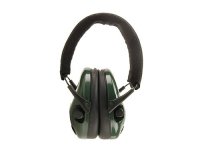Kirk Ethridge
New member
Looking at electronic hearing protection in the Sincalir catalog,
one pair has a NRR of 18,,, another has NRR of 24 (db)
Does the 18 lower the sound further than the 24 or vice versa?
In other words, which one of these is the "quieter" version?
Kirk
one pair has a NRR of 18,,, another has NRR of 24 (db)
Does the 18 lower the sound further than the 24 or vice versa?
In other words, which one of these is the "quieter" version?
Kirk


